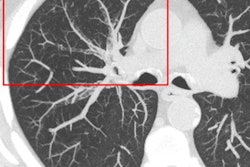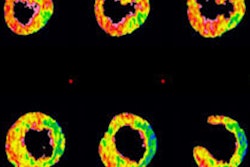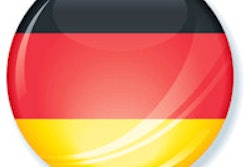
In a world of multiple emerging spectral CT technologies -- some well developed and others in early development -- it's impossible to know which competing method will ultimately deliver the best image for the dose. But one sure thing right now is that dual-source CT (DSCT) edges out the others.
In comparisons of images from multiple technologies including three dual-source generations, photon-counting-detector CT, fast-keV switching single detector CT, a tin prefilter, and the investigational "sandwich" filter detector, which separates and captures multiple spectra in a single gantry pass, DSCT offered the biggest bang for the radiation buck, said researchers from the German Cancer Research Center (DKFZ) in Heidelberg, Germany and Friedrich-Alexander-University (FAU) in Erlangen-Nurnberg.
Thus, for a given radiation dose, DSCT (Siemens Healthcare) had the least noise and the best dose-weighted contrast-to-noise ratio versus other technologies. The comparison isn't fair, of course, as DSCT is the most developed technology among them. But in this experiment, presented at the RSNA 2014 meeting in Chicago, DSCT showed great versatility, especially in its most advanced scanners.
"DSCT today is the best solution available because you can use prefilters to shape the spectra separately and to minimize the overlap, and it might even benefit in the future from photon-counting detectors," said Dr. Marc Kachelreiss, PhD, professor of medical imaging at DFKZ. "We have seen a lot of DSCT. We also have fast tube voltage switching and we also have a dual-layer sandwich detector, and Siemens introduced at RSNA the split-filter technique, which uses a different filter for the first 50% of the detector row compared with the last 50% of the detector row."
Then there are prototype systems that do photon counting. Photon-counting detectors are inherently selective, meaning they can receive a photon and put it into a certain energy bin.
The study aimed to compare the performance of different state-of-the-art dual energy CT (DECT) techniques with novel photon counting (PC) multienergy CT (MECT) with regard to dose efficiency in contrast-enhanced imaging.
"We want to study the differences between these devices and make a fair comparison," he said.
A common spectral CT application is the decomposition of CT data into virtual noncontrast (VNC) and iodine overlay images. Because the number of spectral CT implementations continues to grow, it's important to study their dose efficiency, he said.
The authors simulated a range of different clinical DECT implementations, including DSCT, rapid kV switching, and sandwich-detector DECT. Also simulated were several photon-counting detectors with variable numbers of energy bins. And owing to the rapid advance of dual-source technology, now in its third commercial iteration, the group also simulated dual-source systems with one or both detectors being photon-counting detectors.
The patient data were decomposed and the raw data accessed using a polychromatic forward projection technique. Statistically optimal material decomposition, as described by Faby et al in 2014, was used to ensure a fair comparison of all modalities.
The overlap between low and high energy spectra is important in image-based material decomposition, because mutual information in both spectra increase noise in image subtraction, Kachelreiss noted. The overlap varies in dual-energy CT based on the energy settings of the two tubes.
Spatial resolution and contrast were kept the same among all of the modalities, leaving only the varying image noise to report for this study, followed by conversion into dose reduction values. "Noise minimization then corresponds to the CNRD [dose-weighted contrast-to-noise ratio] maximization," he said.
Relative noise was calculated from second generation DSCT at 100 kV/140 kV Sn (Sn denotes a tin prefilter) because it is the most commonly used, he said. The prefilter led to a dose reduction of 39% for the virtual noncontrast images and 45% for iodine-enhanced images. This is comparable to the performance of an "ideal" photon-counting detector with two energy bins.
"Since dual source appears to be the best technology around, we can think of equipping a DSCT scanner with a photon counter, with photon counting on low kV and energy integrating on the high kV; the opposite doesn't make sense," he said. Photon counting can be used on both sides of the dual source.
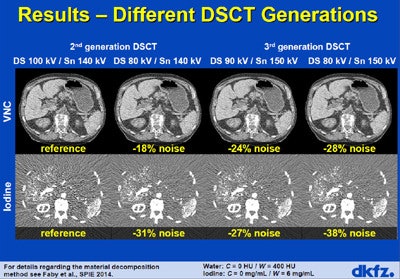 Third-generation DSCT showed low noise levels at virtual noncontrast (VNC) and iodine-enhanced images. All images courtesy of Dr. Marc Kachelreiss, PhD.
Third-generation DSCT showed low noise levels at virtual noncontrast (VNC) and iodine-enhanced images. All images courtesy of Dr. Marc Kachelreiss, PhD.For testing, the group included both a theoretically perfect and realistic photon-counting detectors in the analysis. Using an "ideal" eight-bin photon counting detector, with eight separate bins results in a noise reduction of 48% for virtual noncontrast and 75% for contrast-enhanced images. But performance of "realistic" detectors fell short of the ideal detectors.
"In an ideal case with four energy bins, one might think of the spectra being nonoverlapping for a perfect situation, but in a realistic case, you see significant overlap between the bin spectra and the photon-counting detectors or ring detectors," Kachelreiss said. "Given that photon counting is not very available yet, in maybe five years or something the truth will probably be somewhere in between the realistic case I'm showing you today and the ideal case which we all would like to have."
The sandwich detector DECT at 140 kV on a second-generation DSCT scanner showed a noise increase of 41% for virtual noncontrast images versus 50% noise increases for contrast-enhanced. Sandwich detector DECT at 140 kV shows noise and dose increases of 41% and 98%, respectively, for virtual noncontrast images and 50% and 125%, respectively, for iodine-enhanced images.
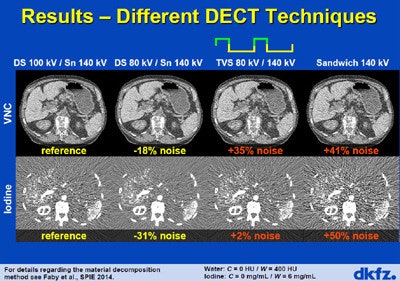 Techniques performed within DSCT had important effects on noise, including rapid voltage switching (TVS) and sandwich detectors.
Techniques performed within DSCT had important effects on noise, including rapid voltage switching (TVS) and sandwich detectors.The realistic photon-counting detector with two energy bins performed similarly to the sandwich detector for the virtual noncontrast images at 140 kV, increasing both noise and dose by more than one-third, but did much better with the iodine images, limiting noise increases to 1% and dose increases to 2%.
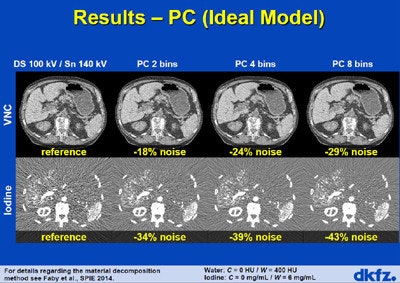 The photon-counting detectors performed better with more bins, but the performance of "realistic" detectors using available technology fell short of performance by so-called "ideal" detectors, leaving room for future refinement.
The photon-counting detectors performed better with more bins, but the performance of "realistic" detectors using available technology fell short of performance by so-called "ideal" detectors, leaving room for future refinement.The results show significant dose-saving possibilities for dual source CT settings for an ideal PC detector with two energy bins. Using four or eight energy bins improves the results further. However, degrading effects in the realistic photon-counting detector set this technology back to the level of today's DECT, Kachelreiss said.
Rapid kV switching from 80 kV to 140 kV came to increase noise by one-third for virtual noncontrast images while reducing it slightly for contrast-enhanced images. Noise increased both for fast kV switching and the sandwich detector at all settings, he said.
Using the split-filter technique, the noise also increased noise slightly, he said. "You cannot make the split filter very thick because the tubes are limited with their power," he said. "Maybe in the future this technique will become better than it is right now."
"There are differences in the performance of different technologies, and DSCT is the best solution available today," because prefilters can be used to spectra separately and minimize spectral overlap. Photon counting may improve DSCT performance even more in the future, Kachelreiss said.




